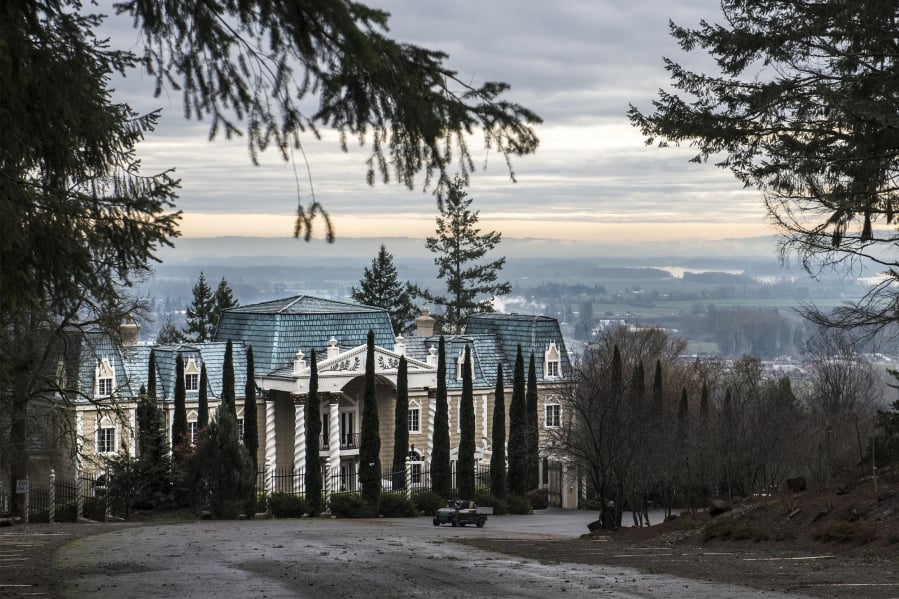WOODLAND — As the Woodland Planning Commission continues to talk about growth, the current city infrastructure has some people questioning whether it should even be discussed right now.
One group who thinks that is the Houser family, who own more than 43 acres of property along South Pekin Road. They were one of eight applicants who asked the city to consider changes to the comprehensive plan map. At last week’s meeting, Allen Engstrom, a Longview attorney representing the family, asked that their application be withdrawn. They were asking the city to expand its urban growth boundary to allow their 43.61 acres into the city and zoned for industrial use.
Engstrom said the Housers originally started talking to the city last year so they could be included in the discussion about a transportation development plan. He said one issue is the crowding of Exit 21 on Interstate 5, which is used to not only get to Woodland, but by others continuing north and east into other parts of Cowlitz County.
“It needs to be addressed before you basically create a lot more opportunities for growth,” Engstrom told the commission. “If you’re not going to change and address the transportation bottlenecks, you’re putting the cart before the horse.”
Another person unsure about growth in the city at this moment in Woodland Mayor Will Finn. Finn hasn’t attended any of the recent meetings where the planning commission discussed six options for growth, and then worked through all eight applications. But the planning commission is only discussing what to recommend to city council, so ultimately Finn will hear about the details. Still, he was ready to talk about the issue during a recent interview.
“I don’t believe we’re ready (for growth) yet,” Finn said.
While the planning commission has discussed the growth scenarios in recent months, Finn has seen his own thoughts on the matter change.
“At first, I would’ve made it possible for anybody to come into the city,” he said.
The six options the planning commission are looking at are:
• No growth or changes at all.
• Internal growth, where all growth will be accommodated through comprehensive plan designation changes for land already within the city limits.
• Partial applicant accommodation, where the city could choose to add some of the land requested into its urban growth boundary.
• Full applicant accommodation, where all applications are included in the urban growth boundary.
• City proposed boundary expansion, where the city will look at urban growth area expansion using “logical and practical approaches to eliminate boundary peculiarities,” according to information from the city.
• Woodland Bottoms planning, where the city will look at the practical implication of growth within the bottomlands, including planning for growth impacts that occur in unincorporated Cowlitz County.
Finn said he originally favored option six, but now thinks the city should wait before expanding. He said Woodland has started discussions with the Washington State Department of Transportation to conduct a study about Exit 21. Until there’s an idea or plan for improving traffic around the exit, Finn said he thinks the city should wait for growth.
Other options for growth
Prior to the Houser family withdrawing its application, the planning commission approved three other projects to recommend to city councilors, one which could change about 21.51 acres from commercial to residential and two which could expand the urban growth boundary by 42-plus acres of residential.
Two of the projects are on property owned by Saxony Pacific. The first, 21.51 acres along Franklin Loop, was recommended for change to residential. The second property, 16.22 acres located along Dike Access Road across from Woodland High School, was recommended for addition to the city’s urban growth boundary. Commissioner Bryan Mattson said that looked like the best option for expansion of the urban growth boundary because it’s surrounded by homes.
The third property, 56.71 acres located north of city between Green Mountain Road and Interstate 5, was maybe the most heavily discussed Thursday night. The plan called for expanding the urban growth boundary to include the property, with 26.36 acres being designated commercial and 30.35 acres as residential.
One issue with the property is the proposed residential zone lies on a hill. Travis Goddard, community development director for Woodland, said that city could serve the eight or nine homes that would be built there by installing a 1- or 2-inch water line from the existing main and pumping water to top of the hill. However, city standards might require that water line extension use 6- or 8-inch pipes, which would require more pump pressure.
“The engineering might require them to pump it halfway up the hill into a cistern and then pump it the other half to a reservoir at the top,” he said. “The reservoir would provide the water to the homes.”
Goddard said that project could be costly enough that instead of eight or nine homes, the developer might want to build more homes. The property owner, Gary Loomis, said at the meeting the developers would cover the cost of the project if it meant getting city water up there.
“Water is really the problem up there,” he said. “We’ve drilled lots of wells. There’s just no water.”
Another issue Goddard brought up was that there are limited directions the city can grow. One possible solution is to grow south into the Woodland Bottoms, but that option has been largely unpopular with residents.
“We’re going to have to make some kind of decision and decide where the growth is going to occur, if we’re going to expand,” he said. “If we’re not expanding to the south or west, north is really the only viable option.”
The planning commission’s growth discussion isn’t over yet. Commissioners still have to discuss the largest piece of property that someone applied to have added to the urban growth boundary: 605.5 acres located south of the city between the railroad tracks and the Lewis River. The property is owned by Aho Construction, and the application asks for it to be zoned residential.
Goddard said the work to get that ready for Thursday’s meeting was too much, so the planning commission will discuss it at 7 p.m. Thursday in council chambers, 200 E. Scott Ave.




